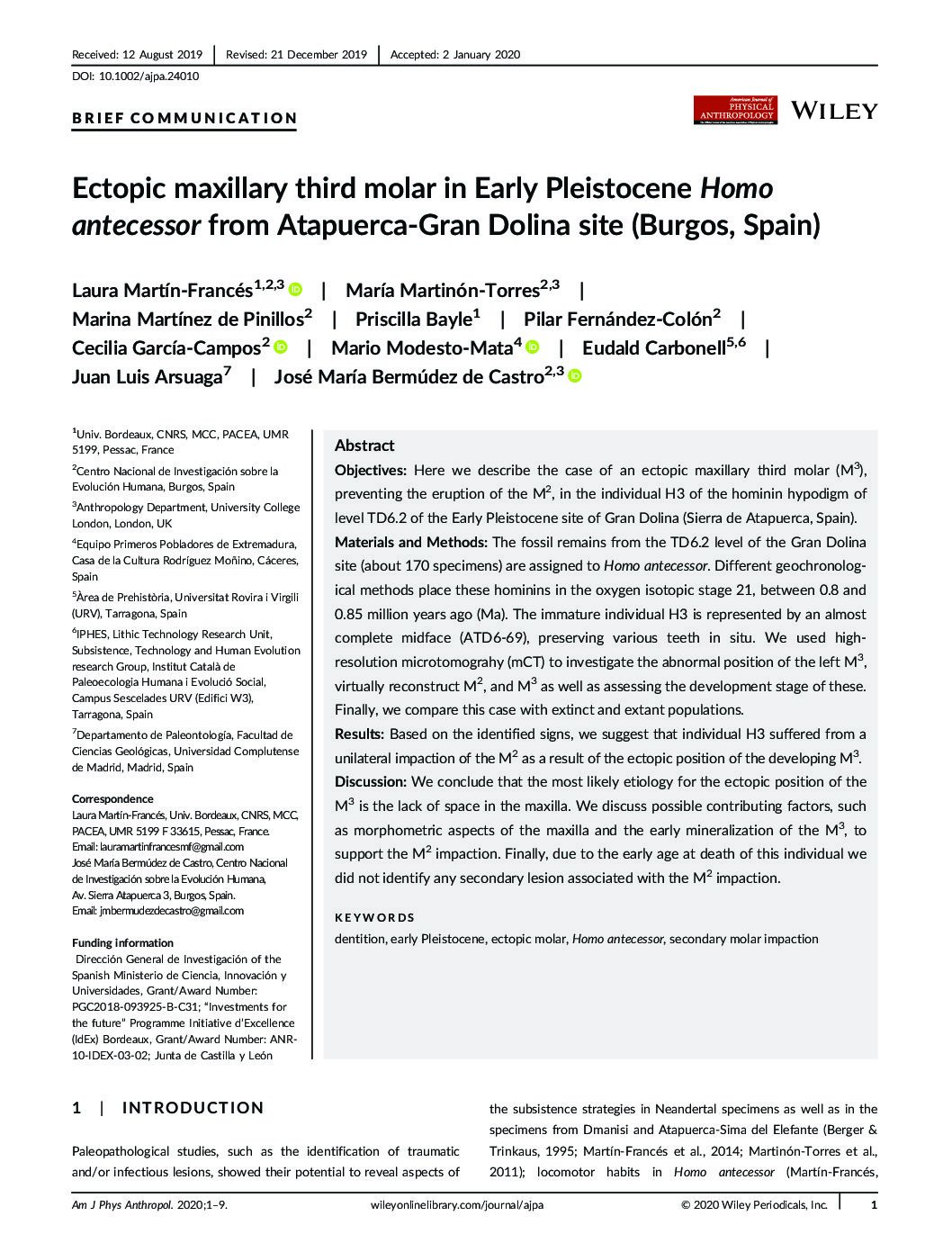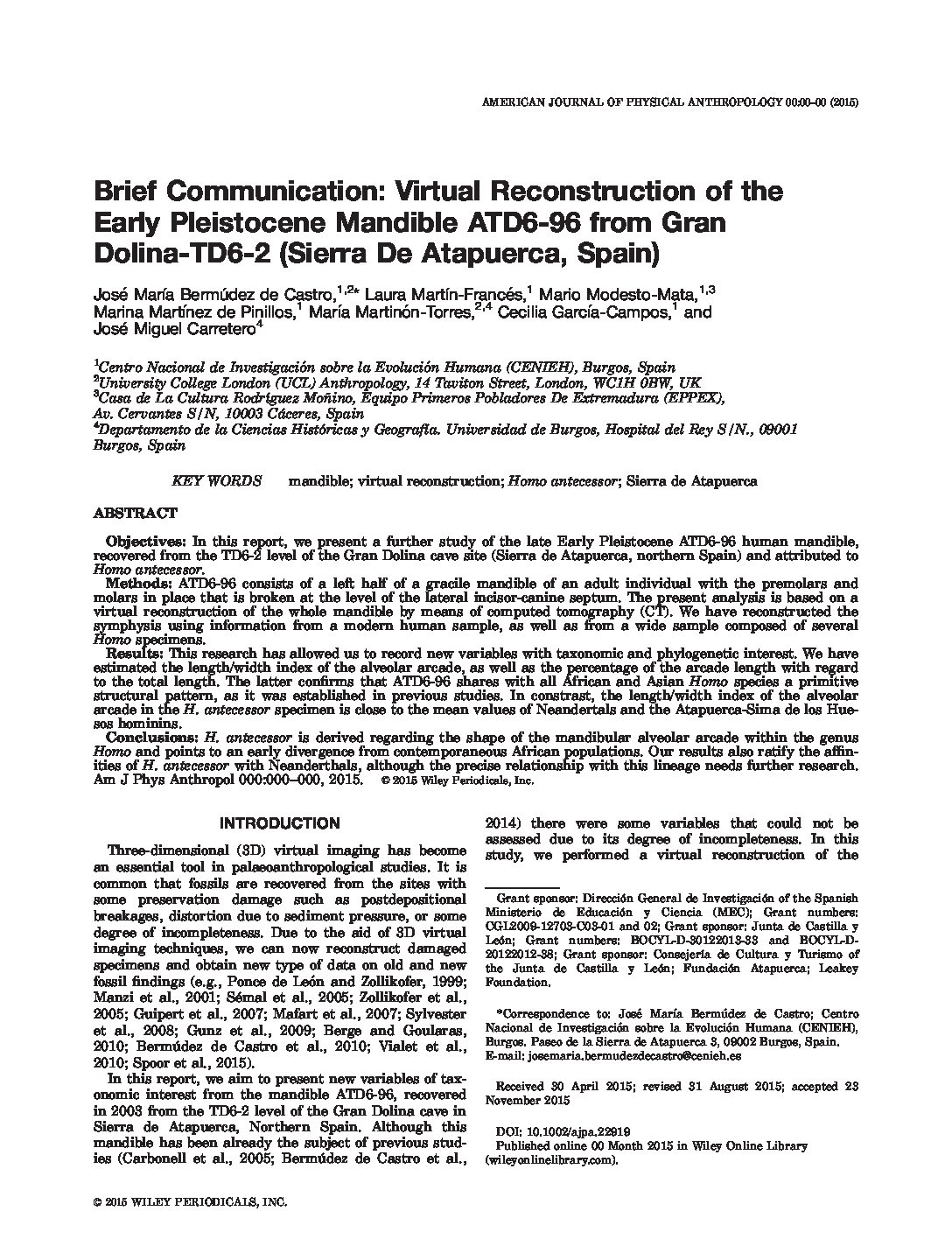The Ratón Pérez collection: Modern deciduous human teeth at the Centro Nacional de Investigación sobre la Evolución Humana (Burgos, Spain)
Objectives The aim of this report is to present the large deciduous tooth collection of identified children that is housed at the National Research Center on Human Evolution (CENIEH) in Burgos, Spain. Methods Yearly, members of the Dental Anthropology Group of the CENIEH are in charge of collecting the teeth and registering all the relevant information from the donors at the time of collection. In compliance with Spanish Law 14/2007 of July 3, 2007, on Biomedical Research (BOE-A-2007-12945), all individuals are guaranteed anonymity and confidentiality. When the donor hands in the tooth, they fill out a Donor Information Form and sign the Informed Consent Form. At the same time, another person completes the data label for the transparent polyethylene zip lock bag where the tooth is temporarily stored. All teeth are then transferred to the CENIEH Restoration lab, where the specialists apply the same protocol as for the fossil remains. Results Although the sample is still growing, from the first collection campaign in 2014 to date it comprises 2977 teeth of children whose ages of tooth loss are between 2 and 15 years. Each tooth is associated with basic information of the individuals and their parents and grandparents (sex, date, and place of birth, ancestry, country of residence), as well as important data about early life history (pregnancy duration, breastfeeding, bottle-feeding) and other relevant information provided by the donors (such as if they are twins, dental loss, or dental extraction). Conclusions Due to the scarcity of deciduous dental samples available, the Ratón Pérez collection represents a highly valuable sample for a wide range of disciplines such as forensic, dental, and anthropological fields among others.







